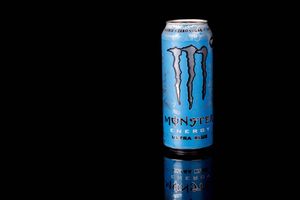BRUKINSA received the China NMPA approval for the treatment of patients with relapsed or refractory Waldenström’s macroglobulinemia (WM) in June 2021
The submission, supported by the ASPEN trial results, could potentially expand BRUKINSA to front-line care of WM
BeiGene (NASDAQ: BGNE; HKEX: 06160; SSE: 688235), a global, science-driven biotechnology company focused on developing innovative and affordable medicines to improve treatment outcomes and access for patients worldwide, today announced that the Center for Drug Evaluation (CDE) of the China National Medical Products Administration (NMPA) has accepted a supplemental new drug application (sNDA) for BeiGene’s BTK inhibitor BRUKINSA® (zanubrutinib) as a treatment for adult patients with Waldenström’s macroglobulinemia (WM).
“The sNDA acceptance is welcoming news, and following BRUKINSA’s recent NMPA approval for patients with WM in the relapsed or refractory setting, this represents an opportunity to expand access to more WM patients in China, subject to NMPA approval. As demonstrated in the ASPEN trial, BRUKINSA can offer an efficacious treatment option with improved safety in regard to certain cardiovascular events, such as atrial fibrillation, for patients with WM,” commented Jane Huang, M.D., Chief Medical Officer, Hematology, BeiGene. “The ASPEN trial has supported BRUKINSA’s approval for patients with WM in the U.S., Canada, Australia, and the European Union. We look forward to continued discussions with the CDE and the opportunity to bring this potential best-in-class therapy to more people in the WM community in China.”
The sNDA is supported by clinical results from the randomized, open-label, multicenter Phase 3 ASPEN trial (NCT03053400) comparing BRUKINSA to ibrutinib in patients with relapsed or refractory (R/R) or treatment-naïve (TN) WM.
As assessed by an independent review committee (IRC) based on the modified Sixth International Workshop on Waldenström’s Macroglobulinemia (IWWM-6) response criteria (Treon 2015), the combined rate of complete response (CR) and very good partial response (VGPR) in the overall intention-to-treat (ITT) population was 28% with BRUKINSA (95% CI: 20, 38), compared to 19% with ibrutinib (95% CI: 12, 28). While this difference was not statistically significant (p=0.09), BRUKINSA did achieve numerically higher VGPR rates and trends towards increased response quality.1
In the ASPEN trial, BRUKINSA demonstrated a more favorable safety profile compared to ibrutinib with lower frequency of certain adverse events, including atrial fibrillation or flutter (2% vs. 15%) and major hemorrhage (6% vs. 9%). Of the 101 patients with WM treated with BRUKINSA, 4% of patients discontinued due to adverse events, and adverse events leading to dose reduction occurred in 14% of patients.4
About Waldenström’s Macroglobulinemia
Waldenström’s macroglobulinemia is a rare, slow-growing lymphoma, characterized by bone marrow infiltration with monoclonal immunoglobulin M (IgM) secreting lymphoplasmacytic cells, that occurs in less than two percent of patients with non-Hodgkin’s lymphoma (NHL).1 The disease usually affects older adults and is primarily found in the bone marrow, although it may also impact lymph nodes and the spleen.2 In China, there are an estimated 88,200 patients diagnosed with lymphoma each year. Approximately 91% of these cases are classified as NHL, amounting to ~1,000 newly diagnosed WM patients per year in China.3
About BRUKINSA
BRUKINSA is a small molecule inhibitor of Bruton’s tyrosine kinase (BTK) discovered by BeiGene scientists that is currently being evaluated globally in a broad clinical program as a monotherapy and in combination with other therapies to treat various B-cell malignancies. Because new BTK is continuously synthesized, BRUKINSA was specifically designed to deliver complete and sustained inhibition of the BTK protein by optimizing bioavailability, half-life, and selectivity. With differentiated pharmacokinetics compared to other approved BTK inhibitors, BRUKINSA has been demonstrated to inhibit the proliferation of malignant B cells within a number of disease relevant tissues.
BRUKINSA is approved in the following indications and regions:
- For the treatment of mantle cell lymphoma (MCL) in adult patients who have received at least one prior therapy (United States, November 2019)*;
- For the treatment of MCL in adult patients who have received at least one prior therapy (China, June 2020)**;
- For the treatment of chronic lymphocytic leukemia (CLL) or small lymphocytic lymphoma (SLL) in adult patients who have received at least one prior therapy (China, June 2020)**;
- For the treatment of MCL in patients who have received at least one prior therapy (Israel, January 2021);
- For the treatment of relapsed or refractory MCL (United Arab Emirates, February 2021);
- For the treatment of Waldenström’s macroglobulinemia (WM) in adult patients (Canada, March 2021);
- For the treatment of adult patients with WM who have received at least one prior therapy (China, June 2021)**;
- For the treatment of MCL in adult patients who have received at least one prior therapy (Canada, July 2021);
- For the treatment of MCL in adult patients who have received at least one prior therapy (Chile, July 2021);
- For the treatment of adult patients with MCL who have received at least one previous therapy (Brazil, August 2021);
- For the treatment of adult patients with WM (United States, August 2021);
- For the treatment of adult patients with marginal zone lymphoma (MZL) who have received at least one anti-CD20-based regimen (United States, September 2021)*;
- For the treatment of adult patients with MCL who have received at least one previous therapy (Singapore, October 2021);
- For the treatment of adult patients with WM who have received at least one prior therapy, or in first line treatment for patients unsuitable for chemo-immunotherapy (Australia, October 2021);
- For the treatment of adult patients with MCL who have received at least one prior therapy (Australia, October 2021);
- For the treatment of adult patients with MCL who have received at least one previous therapy (Russia, October 2021);
- For the treatment of adult patients with MCL who have received at least one previous therapy (Saudi Arabia, November 2021);
- For the treatment of adult patients with WM who have received at least one prior therapy or first-line treatment of patients unsuitable for chemo-immunotherapy (European Union plus Iceland, Lichtenstein, and Norway, November 2021);
- For the treatment of eligible adult patients with Waldenström’s macroglobulinemia (WM) who have received at least one prior therapy or for the first-line treatment of eligible patients unsuitable for chemo-immunotherapy (Great Britain, December 2021); and
- For the treatment of adult patients with MCL who have received at least one previous therapy (Ecuador, December 2021).
To date, more than 20 marketing authorization applications have been submitted for BRUKINSA for various indications..
* This indication was approved under accelerated approval based on overall response rate. Continued approval for this indication may be contingent upon verification and description of clinical benefit in a confirmatory trial.
** This indication was approved under conditional approval. Complete approval for this indication may be contingent upon results from ongoing randomized, controlled confirmatory clinical trials.
IMPORTANT U.S. SAFETY INFORMATION FOR BRUKINSA (ZANUBRUTINIB)
Warnings and Precautions
Hemorrhage
Fatal and serious hemorrhagic events have occurred in patients with hematological malignancies treated with BRUKINSA monotherapy. Grade 3 or higher hemorrhage including intracranial and gastrointestinal hemorrhage, hematuria and hemothorax have been reported in 3.4% of patients treated with BRUKINSA monotherapy. Hemorrhage events of any grade occurred in 35% of patients treated with BRUKINSA monotherapy.
Bleeding events have occurred in patients with and without concomitant antiplatelet or anticoagulation therapy. Co-administration of BRUKINSA with antiplatelet or anticoagulant medications may further increase the risk of hemorrhage.
Monitor for signs and symptoms of bleeding. Discontinue BRUKINSA if intracranial hemorrhage of any grade occurs. Consider the benefit-risk of withholding BRUKINSA for 3-7 days pre- and post-surgery depending upon the type of surgery and the risk of bleeding.
Infections
Fatal and serious infections (including bacterial, viral, or fungal) and opportunistic infections have occurred in patients with hematological malignancies treated with BRUKINSA monotherapy. Grade 3 or higher infections occurred in 27% of patients, most commonly pneumonia. Infections due to hepatitis B virus (HBV) reactivation have occurred.
Consider prophylaxis for herpes simplex virus, pneumocystis jiroveci pneumonia and other infections according to standard of care in patients who are at increased risk for infections. Monitor and evaluate patients for fever or other signs and symptoms of infection and treat appropriately.
Cytopenias
Grade 3 or 4 cytopenias, including neutropenia (26%), thrombocytopenia (11%) and anemia (8%) based on laboratory measurements, developed in patients treated with BRUKINSA monotherapy. Grade 4 neutropenia occurred in 13% of patients, and Grade 4 thrombocytopenia occurred in 3.6% of patients.
Monitor complete blood counts regularly during treatment and interrupt treatment, reduce the dose, or discontinue treatment as warranted. Treat using growth factor or transfusions, as needed.
Second Primary Malignancies
Second primary malignancies, including non-skin carcinoma, have occurred in 14% of patients treated with BRUKINSA monotherapy. The most frequent second primary malignancy was non-melanoma skin cancer, reported in 8% of patients. Other second primary malignancies included malignant solid tumors (4.0%), melanoma (1.7%) and hematologic malignancies (1.2%). Advise patients to use sun protection and monitor patients for the development of second primary malignancies.
Cardiac Arrhythmias
Atrial fibrillation and atrial flutter were reported in 3.2% of patients treated with BRUKINSA monotherapy. Patients with cardiac risk factors, hypertension, and acute infections may be at increased risk. Grade 3 or higher events were reported in 1.1% of patients treated with BRUKINSA monotherapy. Monitor signs and symptoms for atrial fibrillation and atrial flutter and manage as appropriate.
Embryo-Fetal Toxicity
Based on findings in animals, BRUKINSA can cause fetal harm when administered to a pregnant woman. Administration of zanubrutinib to pregnant rats during the period of organogenesis caused embryo-fetal toxicity including malformations at exposures that were 5 times higher than those reported in patients at the recommended dose of 160 mg twice daily. Advise women to avoid becoming pregnant while taking BRUKINSA and for 1 week after the last dose. Advise men to avoid fathering a child during treatment and for 1 week after the last dose.
If this drug is used during pregnancy, or if the patient becomes pregnant while taking this drug, the patient should be apprised of the potential hazard to a fetus.
Adverse reactions
The most common adverse reactions, including laboratory abnormalities, in ≥ 30% of patients who received BRUKINSA (N = 847) included decreased neutrophil count (54%), upper respiratory tract infection (47%), decreased platelet count (41%), hemorrhage (35%), decreased lymphocyte count (31%), rash (31%) and musculoskeletal pain (30%).
Drug Interactions
CYP3A Inhibitors: When BRUKINSA is co-administered with a strong CYP3A inhibitor, reduce BRUKINSA dose to 80 mg once daily. For coadministration with a moderate CYP3A inhibitor, reduce BRUKINSA dose to 80 mg twice daily.
CYP3A Inducers: Avoid coadministration with moderate or strong CYP3A inducers.
Specific Populations
Hepatic Impairment: The recommended dose of BRUKINSA for patients with severe hepatic impairment is 80 mg orally twice daily.
Please see full U.S. Prescribing Information at www.beigene.com/PDF/BRUKINSAUSPI.pdf and Patient Information at www.beigene.com/PDF/BRUKINSAUSPPI.pdf.
BeiGene Oncology
BeiGene is committed to advancing best- and first-in-class clinical candidates internally or with like-minded partners to develop impactful and affordable medicines for patients across the globe. We have a growing R&D and medical affairs team of approximately 2,900 colleagues dedicated to advancing more than 100 clinical trials that have involved more than 14,500 subjects. Our expansive portfolio is directed predominantly by our internal colleagues supporting clinical trials in more than 45 countries and regions. Hematology-oncology and solid tumor targeted therapies and immuno-oncology are key focus areas for the Company, with both mono- and combination therapies prioritized in our research and development. BeiGene currently has three approved medicines discovered and developed in our own labs: BTK inhibitor BRUKINSA in the United States, China, the EU and U.K., Canada, Australia and additional international markets; and the non-FC-gamma receptor binding anti-PD-1 antibody tislelizumab as well as the PARP inhibitor pamiparib in China.
BeiGene also partners with innovative companies who share our goal of developing therapies to address global health needs. We commercialize a range of oncology medicines in China licensed from Amgen, Bristol Myers Squibb, EUSA Pharma and Bio-Thera. We also plan to address greater areas of unmet need globally through our other collaborations including with Mirati Therapeutics, Seagen, and Zymeworks.
In January 2021 BeiGene and Novartis announced a collaboration granting Novartis rights to co-develop, manufacture, and commercialize BeiGene’s anti-PD1 antibody tislelizumab in North America, Europe, and Japan. Building upon this productive collaboration, including a biologics license application (BLA) under FDA review, BeiGene and Novartis announced two new agreements in December 2021 granting rights to Novartis to co-develop, manufacture, and commercialize BeiGene’s TIGIT inhibitor ociperlimab that is in Phase 3 development and add five approved Novartis oncology products to the BeiGene product portfolio across designated regions of China.
About BeiGene
BeiGene is a global, science-driven biotechnology company focused on developing innovative and affordable medicines to improve treatment outcomes and access for patients worldwide. With a broad portfolio of more than 40 clinical candidates, we are expediting development of our diverse pipeline of novel therapeutics through our own capabilities and collaborations. We are committed to radically improving access to medicines for two billion more people by 2030. BeiGene has a growing global team of over 8,000 colleagues across five continents. To learn more about BeiGene, please visit www.beigene.com and follow us on Twitter at @BeiGeneGlobal.
Forward-Looking Statements
This press release contains forward-looking statements within the meaning of the Private Securities Litigation Reform Act of 1995 and other federal securities laws, including statements regarding the potential clinical benefits and advantages of BRUKINSA compared to other BTK inhibitors; BeiGene's plans for the advancement, and anticipated clinical development, regulatory milestones and commercialization of BRUKINSA, the potential commercial opportunity for BRUKINSA, plans for making BRUKINSA accessible to patients in China, the potential for BRUKINSA to be a best-in-class BTK inhibitor and to provide improved clinical benefits to patients, and BeiGene’s plans, commitments, aspirations and goals under the headings “BeiGene Oncology” and “About BeiGene”. Actual results may differ materially from those indicated in the forward-looking statements as a result of various important factors, including BeiGene's ability to demonstrate the efficacy and safety of its drug candidates; the clinical results for its drug candidates, which may not support further development or marketing approval; actions of regulatory agencies, which may affect the initiation, timing and progress of clinical trials and marketing approval; BeiGene's ability to achieve commercial success for its marketed medicines and drug candidates, if approved; BeiGene's ability to obtain and maintain protection of intellectual property for its medicines and technology; BeiGene's reliance on third parties to conduct drug development, manufacturing and other services; BeiGene’s limited experience in obtaining regulatory approvals and commercializing pharmaceutical products and its ability to obtain additional funding for operations and to complete the development and commercialization of its drug candidates and achieve and maintain profitability; the impact of the COVID-19 pandemic on the BeiGene’s clinical development, regulatory, commercial, and other operations, as well as those risks more fully discussed in the section entitled “Risk Factors” in BeiGene’s most recent quarterly report on Form 10-Q as well as discussions of potential risks, uncertainties, and other important factors in BeiGene's subsequent filings with the U.S. Securities and Exchange Commission. All information in this press release is as of the date of this press release, and BeiGene undertakes no duty to update such information unless required by law.
References
1. Tam, et al. A randomized phase 3 trial of zanubrutinib vs ibrutinib in symptomatic Waldenström macroglobulinemia: the ASPEN study. Blood. October 2020. 136(18): 2038-2050.
2. Lymphoma Research Foundation. Available at https://lymphoma.org/aboutlymphoma/nhl/wm/. Accessed December 2020.
3. Chen, et al. Cancer statistics in China, 2015 [J]. CA: A Cancer Journal for Clinicians, 2016, 66(2):115-132.
4. Tam, et al. ASPEN: Results of a Phase 3 randomized trial of zanubrutinib versus ibrutinib for patients with Waldenström macroglobulinemia (WM). DOI: 10.1200/JCO.2020.38.15_suppl.8007 Journal of Clinical Oncology 38, no. 15_suppl (May 20, 2020) 8007-8007.
View source version on businesswire.com: https://www.businesswire.com/news/home/20220120005178/en/
Contacts
BeiGene
Investor
Kevin Mannix
+1 240-410-0128
ir@beigene.com
Media
Vivian Ni
+1 857-302-7596
media@beigene.com


















